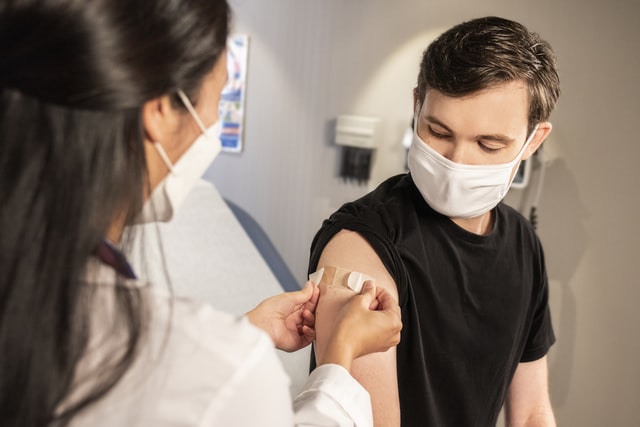Ontario, fluctuating infections: now they are decreasing. The percentages of vaccinated in Canada

TORONTO – The pace of infections in Ontario is once again fluctuating. Today, the province recorded more than 300 new cases (331) and another 7 deaths. Infections down, therefore, compared to 422 on Monday but up compared to 269 a week ago. However, much better than a year ago: on this same day of 2020, the province had reported 948 new cases.
The seven-day moving average of new infections is now 371, up from 362 on Monday and 364 a week ago. The provincial laboratories have processed 20,148 tests in the last 24 hours, producing a positive rate of 1.5%, unchanged from a week ago.
Of today’s cases, 42 were reported in Toronto, 36 in the Peel region, 44 in York, 19 in Halton and 2 in Durham. Elsewhere in Ontario, 23 new cases have been registered in Ottawa, 22 in Simcoe Muskoka and 21 in Hamilton.
Of today’s infections, 156 were detected in unvaccinated people, 14 partially vaccinated, 136 fully vaccinated, and 25 with an unknown vaccination status. So far, 88% of eligible Ontarians have received a dose of the vaccine and 84% have received due.
230 people with the virus hospitalized in hospitals throughout the province and 136 in intensive care units. Of the latter, 84 breathe with the assistance of a ventilator. Furthermore, 122 of the ICU patients are not fully vaccinated or have an unknown vaccination status and only 14 are fully vaccinated.
Since the start of the pandemic, there have been 600,708 laboratory-confirmed coronavirus cases in Ontario and 587,727 (of these, 383 recovered today): 3,100 active (known) cases remain across the province. The death toll linked to the Ontario virus has instead reached 9,881 people.
Today Quebec reported 490 new cases (up from 497 on Monday) and an increase in ICU admissions. There are also 6 deaths due to the coronavirus, according to provincial data, which bring the total deaths to 11,502.
Of the 490 new infections, 301 (61%) were detected in people who were not fully vaccinated, while 189 cases (38%) in people who received the second dose of the vaccine more than seven days ago.
In the past 24 hours, 22 people have been hospitalized and 16 patients have been discharged, for an overall increase of 6 hospitalized people. A total of 250 people are now in hospital with the virus. Among the newly hospitalized, 16 are unvaccinated and 6 had their second vaccination more than a week ago. The number of people in intensive care also increased by four compared to the day before, for a total of 71.
In Quebec, 4,497 cases are still active (and known) across the province, with an increase of 82 since Monday.
An additional 10,759 vaccine doses were administered in the last 24 hours. Overall, 13,260,203 vaccines were provided in the province. As of Tuesday, 6,793,078 first doses were administered, covering 79% of the entire Quebec population, while 6,509,941 second doses were administered, 75% of the total population. Considering only those eligible (ages 12 and up), 90% received the first dose and 87% received two.
But what, by the way, is the vaccination situation across Canada? According to data updated to today, calculated on the basis of the eligible population (therefore over the age of 12), the province with the lowest percentage of vaccinated is Alberta where 86.50% received the first dose and the 79.73% received two. Almost all the others are now 90% of the population eligible with a first dose, with the maximum peak in the Northwest Territories where this percentage is close to 98%. For the second doses, therefore the so-called “fully vaccinated”, also in this case stand out the Northwest Territories (92.77%), the Yukon (90.21%) and Prince Edward Island (90.15%), while all the other provinces are between 80 and 89%, with the exception of Nunavut (78.21%) and, in fact, Alberta, at the bottom.



